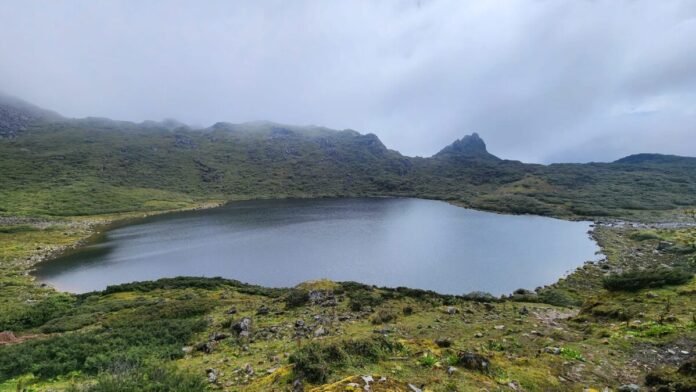The Tawang District Disaster Management Authority (DDMA) in Arunachal Pradesh has conducted an expedition to assess the risk of glacial lake outburst floods (GLOFs) in the region. This critical survey, carried out in August 2024, aims to evaluate the potential threat posed by melting glaciers and the resulting risk of catastrophic flooding, which has become an increasing concern due to climate change and rising temperatures.
Tawang, located in the northeastern part of Arunachal Pradesh, is renowned for its breathtaking landscapes, including numerous glaciers and high-altitude lakes. While these natural features contribute to the region’s beauty and ecological significance, they also pose significant risks in the form of glacial lake outburst floods. GLOFs occur when the natural dam formed by a glacier or ice melt bursts, leading to a sudden and massive release of water that can cause devastating floods downstream.
The expedition, led by the Tawang DDMA, involved a team of experts, including geologists, hydrologists, and disaster management professionals. The team was tasked with surveying several key glacial lakes and their surrounding areas to assess their stability and identify potential risks. This expedition is part of a broader initiative by the Arunachal Pradesh government to address the increasing frequency of extreme weather events and their impact on local communities.
During the survey, the team focused on several critical areas. They examined the structural integrity of natural dams formed by glacial melt, assessed the volume of water held in glacial lakes, and analyzed potential triggers for outburst floods, such as changes in temperature and precipitation patterns. The team also collected data on glacial retreat and the rate of ice melt, which are crucial factors in understanding the evolving risk landscape.
One of the key findings of the expedition was the identification of several glacial lakes that are at high risk of outburst floods. These lakes, situated at high altitudes and surrounded by fragile glacial structures, have shown signs of instability, raising concerns about their potential to cause significant flooding in downstream areas. The team noted that even minor changes in weather patterns or seismic activity could trigger catastrophic events, highlighting the urgent need for preventive measures and early warning systems.
In addition to assessing the physical risks, the expedition also focused on the socio-economic impact of potential GLOFs. The downstream areas affected by such floods include several villages and important infrastructure, including roads and bridges. The team’s assessment included an evaluation of the potential damage to property, disruption of essential services, and the risk to human lives. This comprehensive approach ensures that the disaster management strategies are tailored to the specific needs of the affected communities.
Following the survey, the Tawang DDMA has outlined several recommendations to mitigate the risks associated with glacial lake outburst floods. These include the development of early warning systems that use real-time data to monitor glacial lakes and predict potential outbursts. The installation of monitoring equipment, such as remote sensors and satellite imagery, is recommended to provide timely alerts and enhance response capabilities.
The DDMA also emphasized the importance of community awareness and preparedness. Local residents are being educated about the signs of potential glacial lake outburst floods and advised on emergency response procedures. Community-based disaster management plans are being developed to ensure that residents are well-prepared to respond in case of an emergency.
Moreover, the government is considering the construction of protective infrastructure, such as diversion channels and flood barriers, to mitigate the impact of potential outburst floods. These measures aim to reduce the risk to vulnerable areas and improve the overall resilience of the region’s infrastructure.
The findings of the expedition have been shared with state and central government authorities to ensure a coordinated approach to disaster management. The Arunachal Pradesh government has committed to implementing the recommended measures and investing in further research to enhance the understanding of glacial lake outburst flood risks.
In addition, the expedition conducted by the Tawang District Disaster Management Authority represents a crucial step in addressing the risk of glacial lake outburst floods in Arunachal Pradesh. By assessing the potential threats and developing targeted strategies, the authorities are working to safeguard communities and infrastructure from the devastating effects of such floods. As climate change continues to impact the region, ongoing efforts to monitor and manage these risks will be essential in ensuring the safety and resilience of the Tawang district and its residents.




